What Is B2C Content Marketing?
Business-to-consumer (B2C) content marketing is creating and sharing valuable, relevant, and consistent content with your company's customers.
Its main goal is sharing information that helps consumers become more knowledgeable.
This helps cultivate a relationship between your brand and your customers. Which can increase their loyalty and ultimately motivate them to make a purchase.
Komoot's blog is a great example of effective B2C content marketing:
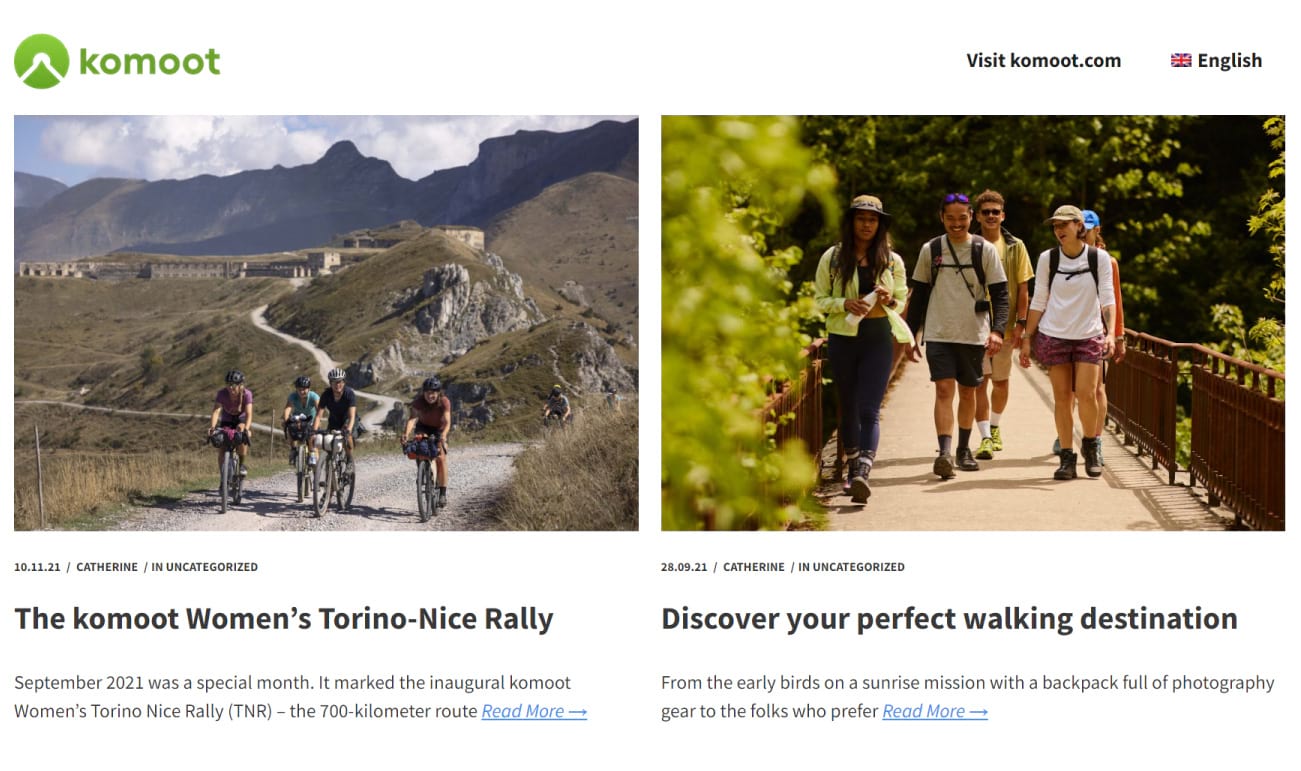
They provide useful tips, information, and inspiration for outdoor enthusiasts to plan their adventures.
These days, consumers are looking for more than just a product or service.
They seek an experience, a story, and value. And B2C content marketing provides that by offering useful information or entertainment.
Without directly selling something.
B2B vs. B2C Content Marketing
Business-to-business (B2B) content marketing focuses on organizations, businesses, and professionals.
B2B buyers are usually well-informed. And their purchasing decisions are often influenced by a team rather than just one person.
B2B content marketing aims to offer valuable content that tackles complex problems or shares insights on industry trends and developments.
This approach helps your company establish itself as a thought leader in the industry and build trust. And might involve a few interactions before a potential customer decides to make a purchase.
Asana's B2B product videos are a good example.

In contrast, B2C content marketing targets individual consumers.
B2C content marketing is often more product-centric and emotionally driven. Aiming to engage consumers on a more personal level.
It focuses on customer benefits. Often through storytelling and entertainment. And seeks to stimulate an immediate response or purchase.
Lonely Planet's "Best in Travel" campaign shows that pretty well.

Despite these differences, both B2B and B2C content marketing share a common goal: building strong relationships with audiences to drive business growth.
B2C Content Marketing Statistics: What You Need to Know
In February 2023, we interviewed 1,700 marketers and business owners about their content marketing efforts.
Here's what we found:
- 51% mentioned tracking organic traffic. This shows that many people recognize the importance of this task. Emphasizing the need for businesses to prioritize and optimize their organic search strategies.
- 19% reported revenue calculation from non-paid channels. This suggests that monitoring and measuring revenue from organic channels is becoming more common.
- 64% calculated the revenue generated by their content marketing. This means that businesses are seeing the value and ROI of content marketing.
These statistics highlight the significance of organic traffic and the value businesses are finding in their content marketing efforts. Proving that B2C content marketing is not just a trend, but an essential strategy for businesses to succeed.
9 B2C Content Marketing Examples and Tips
Below, we explore nine impactful B2C content marketing examples. And the strategies behind their success.
Go Omnichannel for Consistency
Omnichannel marketing brings together all customer platforms and devices. Making sure users have a consistent experience across all channels.
It aims to provide customers with a seamless shopping experience, whether online or in-store.
Starbucks' rewards program is a prime example. Members can order and pay for coffee on their phone, then pick it up in-store, bypassing lines:
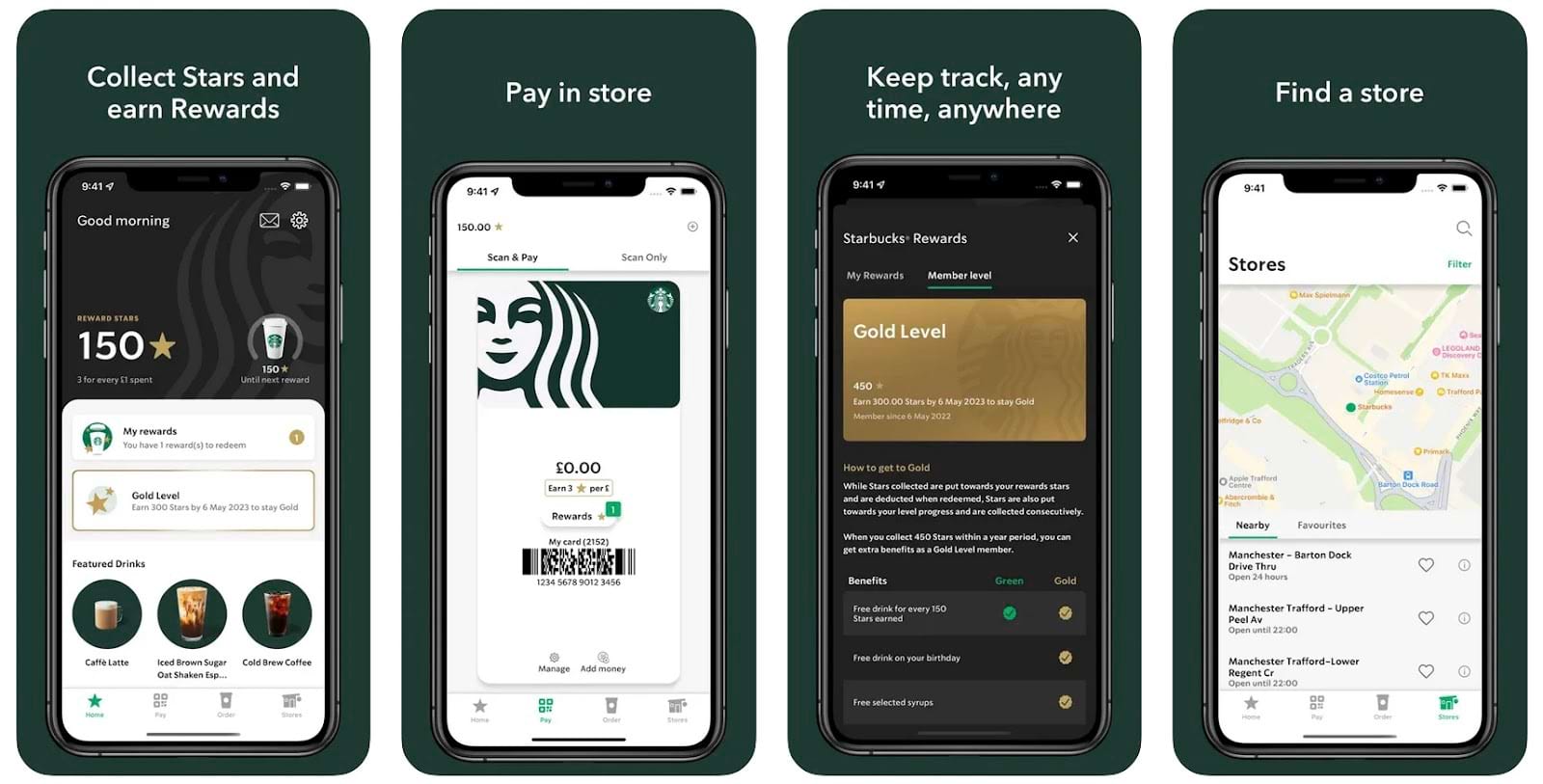
The key to omnichannel marketing is that it aligns content delivery across many channels to work together. Enabling customers to move flawlessly between channels on their journey to a purchase.
To kickstart omnichannel marketing, you must first figure out how and where your audience engages with your brand.
You can use Google Analytics (GA) to see where your website traffic is coming from, and which channels lead to conversions.
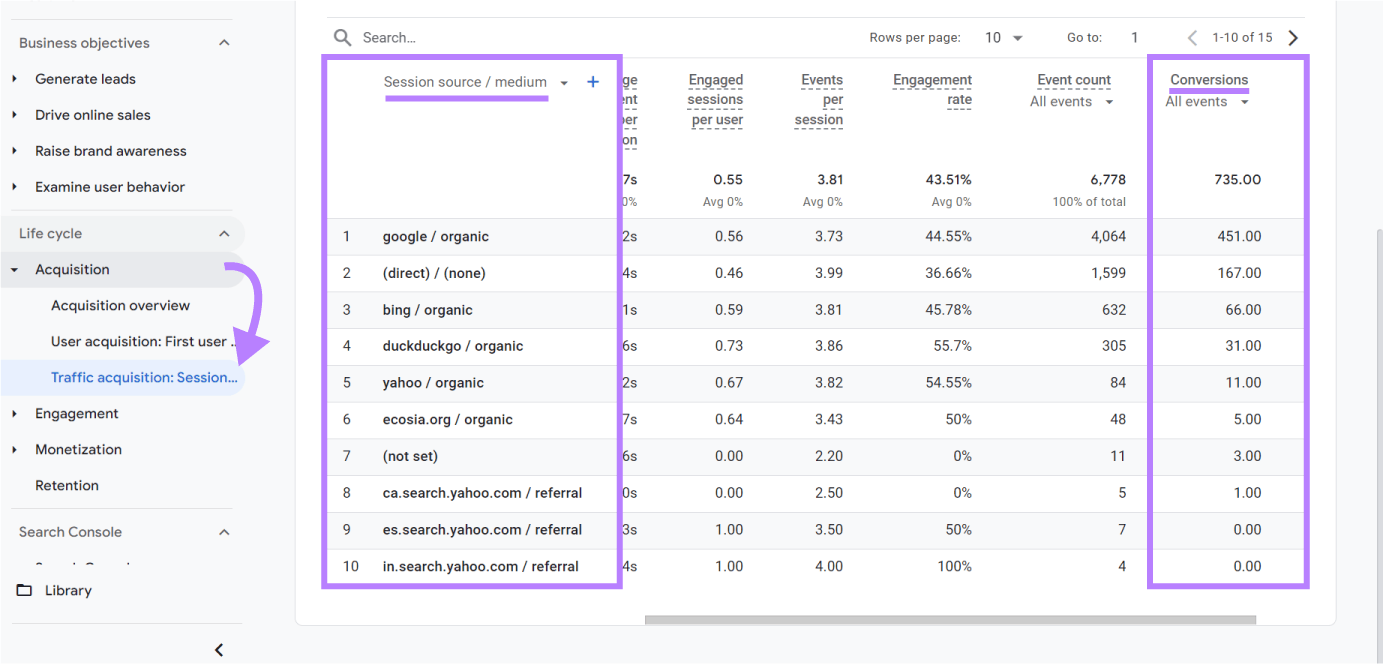
Use Multiple Mediums for Maximum Reach
Different mediums appeal to different demographics. Some people prefer written content, while others prefer visual or audio content.
By using multiple mediums, you can reach a broader audience. And cater to their preferred formats.
For example, Smart Passive Income uses a podcast, blog, and YouTube channel in their content marketing strategy.

Using multiple mediums also helps keep your content fresh and interesting.
So, how do you maximize your reach with multiple mediums?
First, understand the different segments of your audience and their preferred content mediums.
You can use tools like Google Analytics as well as social media insights to gather data on your audience demographics and their consumption habits.
Then you can use our free buyer persona tool to develop your customer avatar.
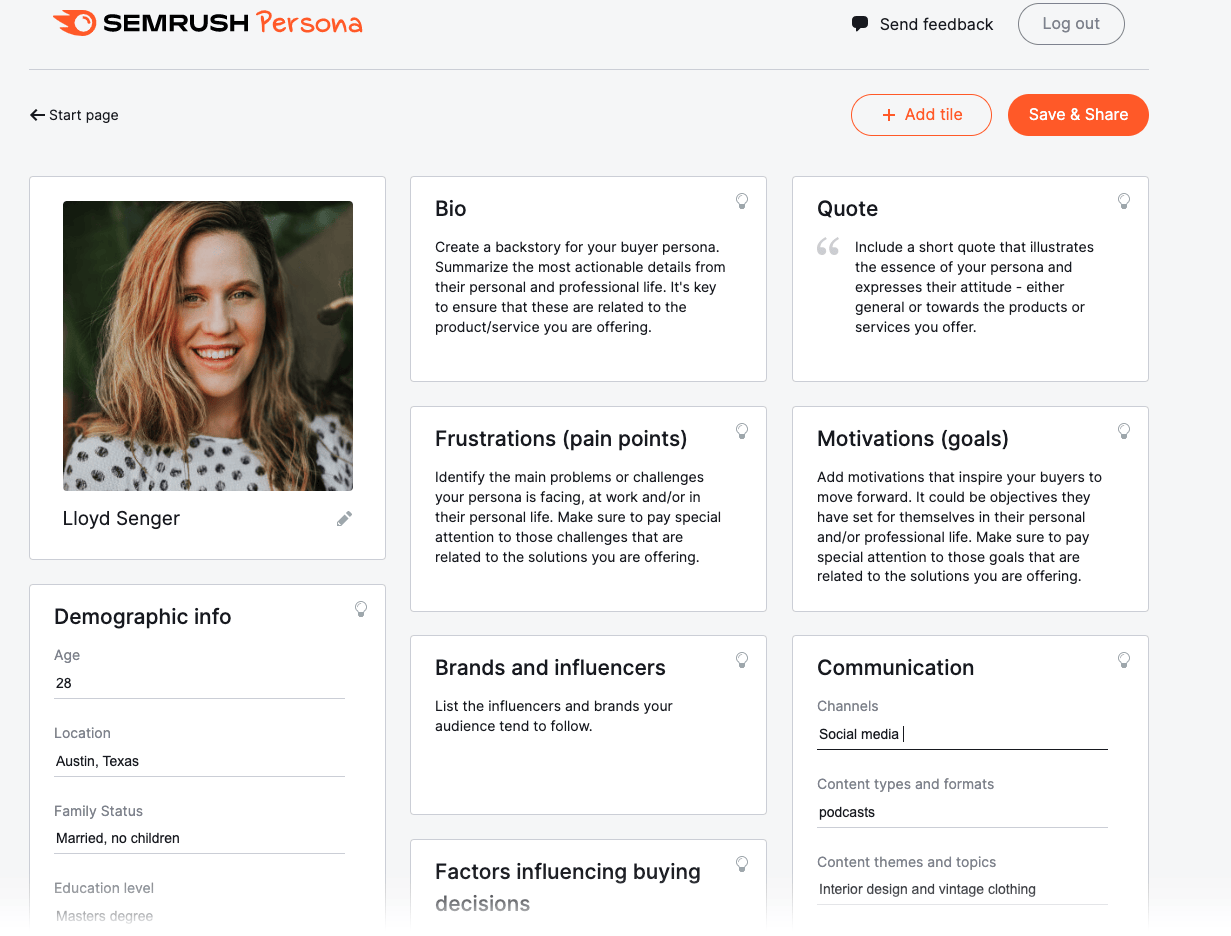
And based on your audience personas, create diverse content.
This includes blog posts, infographics, videos, podcasts, and social media posts.
You can also repurpose your content into different formats to appeal to different audiences.
Repurposing is key to leveraging multiple mediums without overtaxing your resources.
For example, you can transform a blog post into an infographic, podcast episode, or video tutorial.
However, make sure not to stretch yourself too thin. Focus on creating quality content rather than trying to be present everywhere.
Cultivate, Nurture, and Pay Influencers
Influencer marketing leverages well-known people or personalities to promote a brand or its products and services.
For example, Daniel Wellington used influencer marketing to become a household name in the watch industry.

This strategy assumes that influencers do greatly influence their followers' buying decisions based on their expertise, credibility, or popularity.
In the B2C world, influencer marketing can be effective because influencers usually have a personal and direct connection with consumers.
It's less likely that a single influencer can sway the purchasing decisions of a business in the same way they can with individual consumers in a B2C context.
But how do you start an influencer campaign?
First, you must find influencers who resonate with your audience and niche.
You can easily find the right influencers for your needs with Semrush's Influencer Analytics tool. It can search for influencers by channel or keyword. And you can see data on influencers’ metrics.
Let’s say you want to run a YouTube influencer marketing campaign. So you need YouTube creators to promote your products.
In the Influencer Analytics tool, go to “Influencer Discovery” and select YouTube.
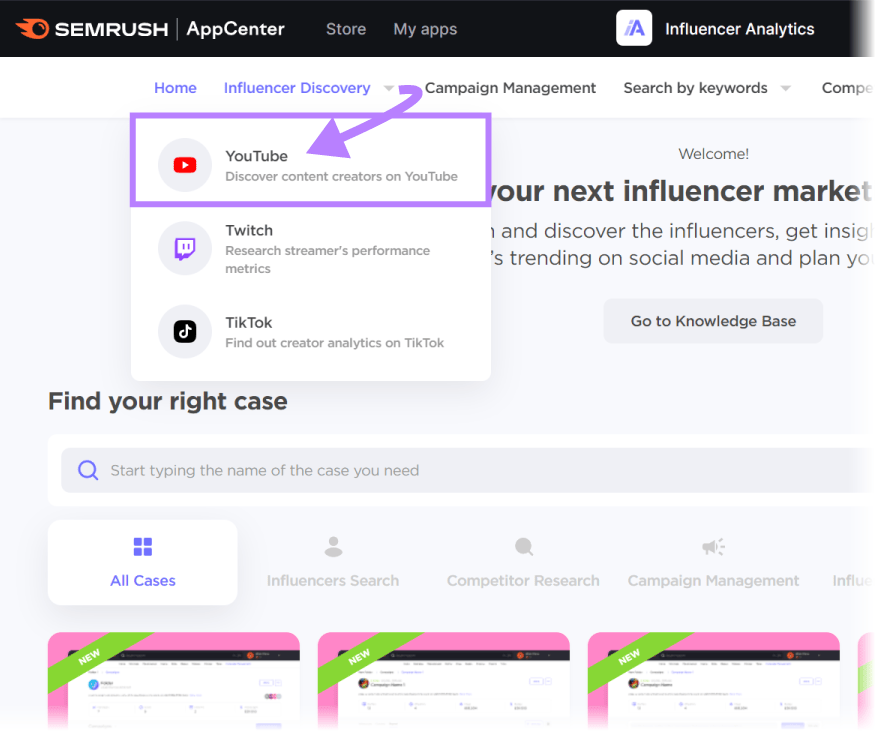
Then, click “Filters” to find influencers using different filter combinations based on metrics like subscriber count or average video views:
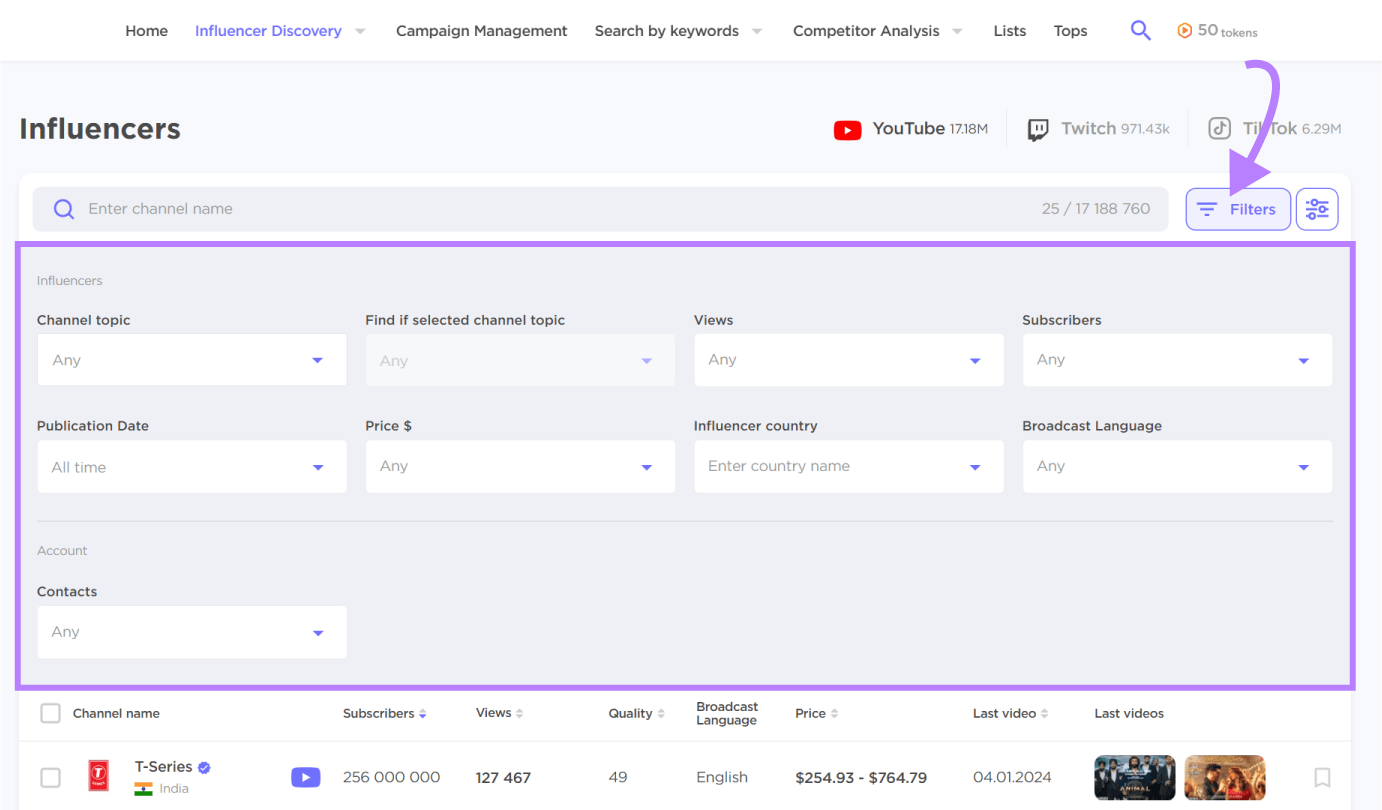
This will help you find influencers who have the reach and engagement you desire.
Once you've shortlisted potential influencers, click on their profiles to dig deeper:
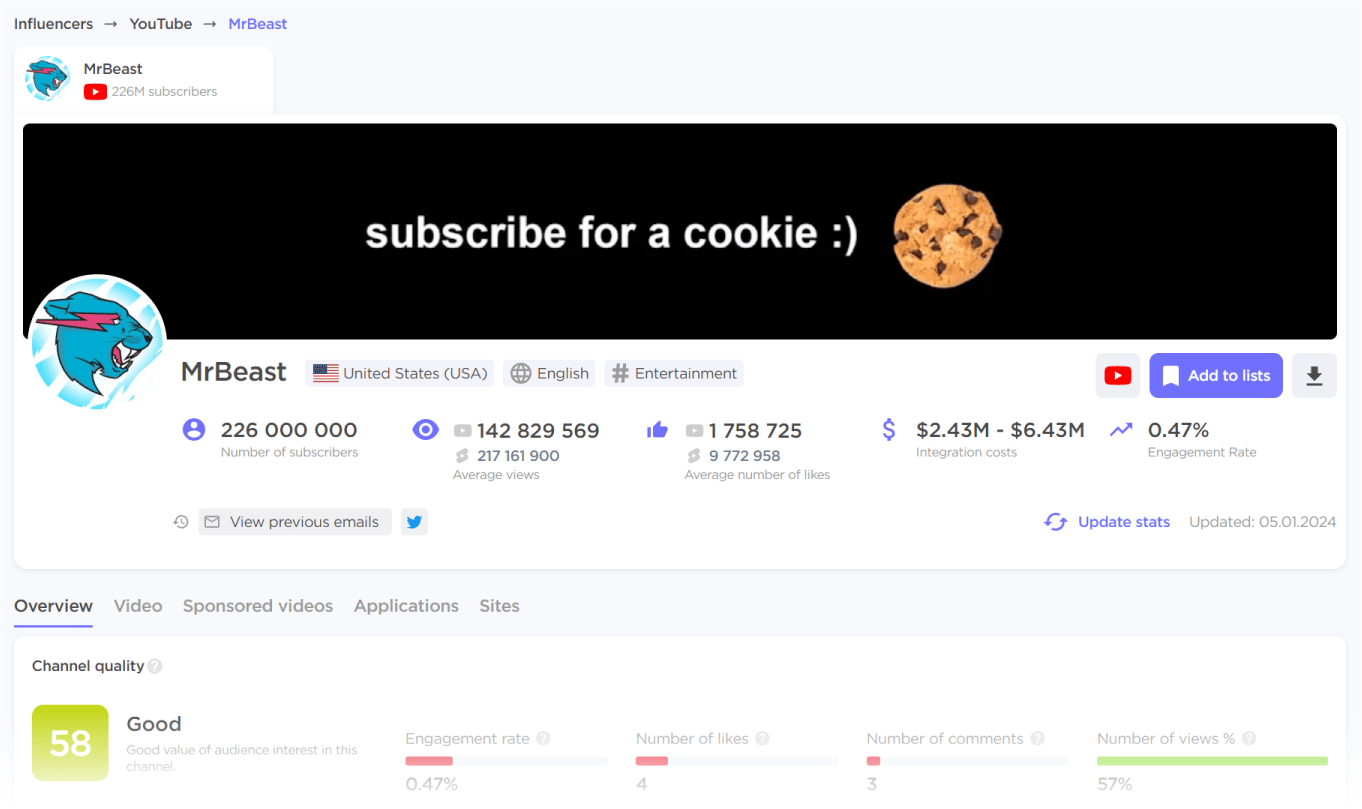
You can study their audience demographics, see their top videos, and understand engagement trends.
After you've identified your ideal influencers, you can reach out to them directly through their listed contact information.
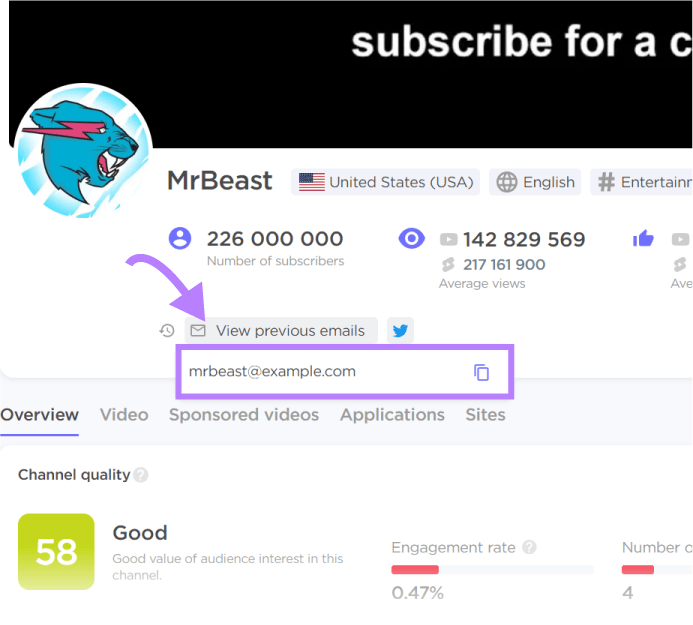
Understand Your Customer
Understanding your customer allows you to create personalized content that connects, meets their needs, and drives conversions. B2C marketing is often casual and playful, evoking emotions and encouraging impulsive decisions.
By knowing your audience's demographics, interests, and behaviors, you can optimize content distribution on the right channels at the right time.
One way to understand your customers is by gaining insights into your competitors' target audiences. You can do this with a competitor monitoring tool like Semrush's One2Target.
This tool can help you uncover demographic, socioeconomic, and psychographic data.
Let’s say you're in the travel industry and want to learn more about The Culture Trip's audience.
Go to the tool, enter the domain (theculturetrip.com), and click “Analyze.”
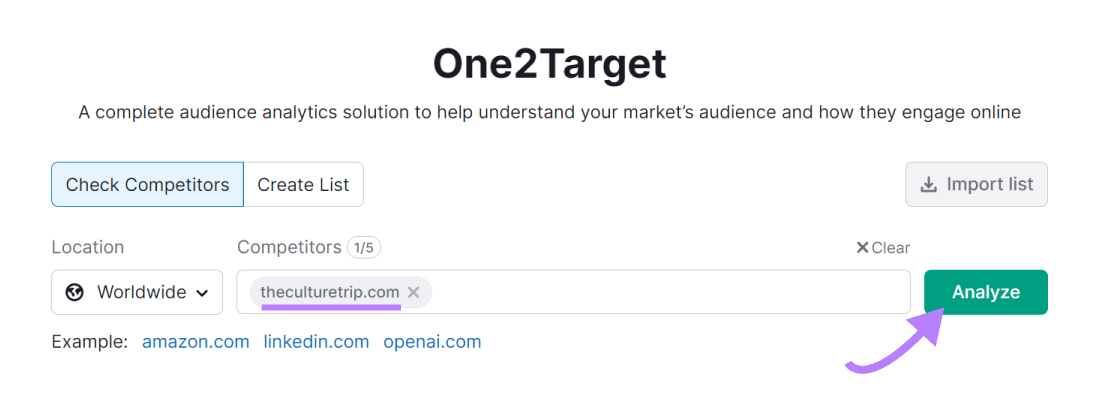
Next, you'll get a complete picture of your competitor's target audience.
For example, in the "Demographics" tab, you'll see their audience breakdown by age, gender, and country:
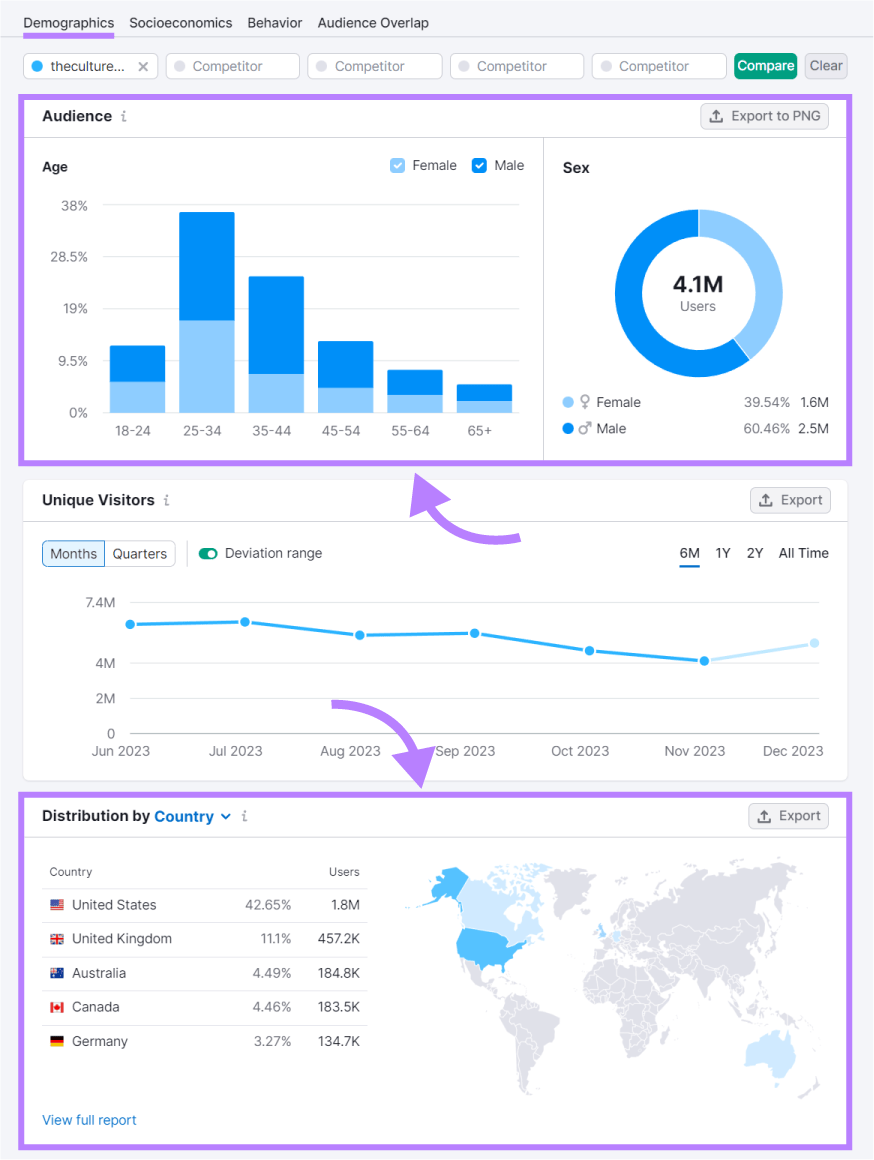
In the “Socioeconomics” tab, you’ll find their audience’s household size, household income, employment status, and education level:
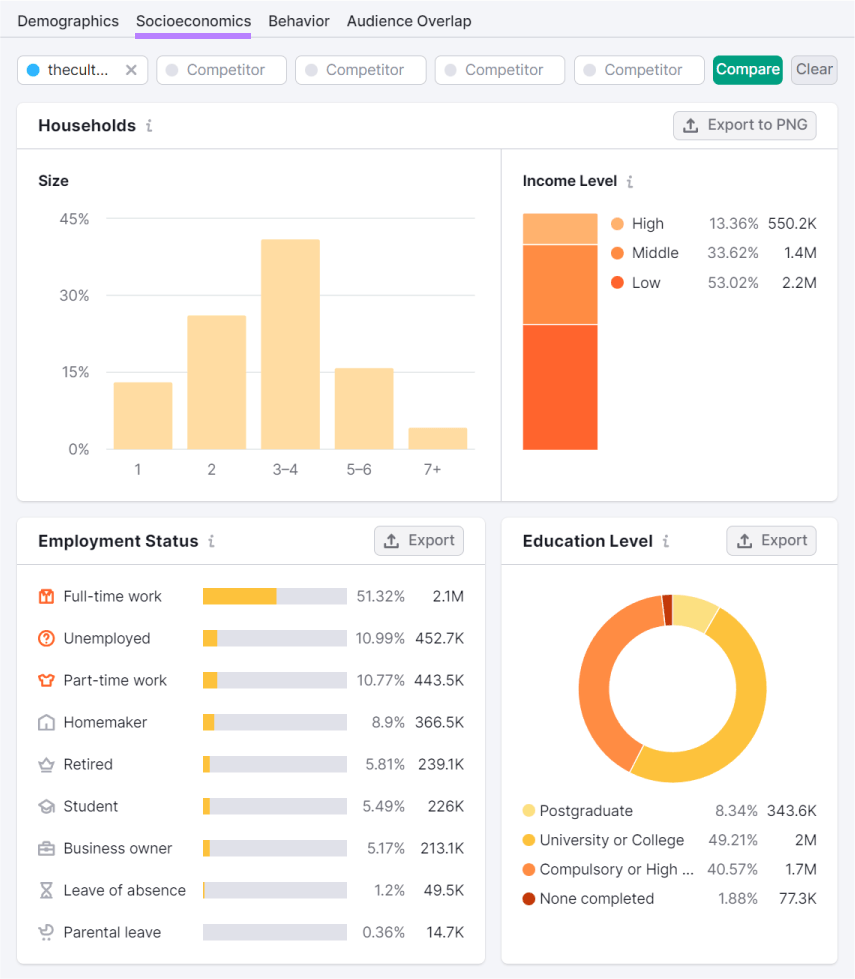
And in the "Behavior" tab, you'll discover more about your competitors' audiences' interests, device types, and most-used social media platforms:
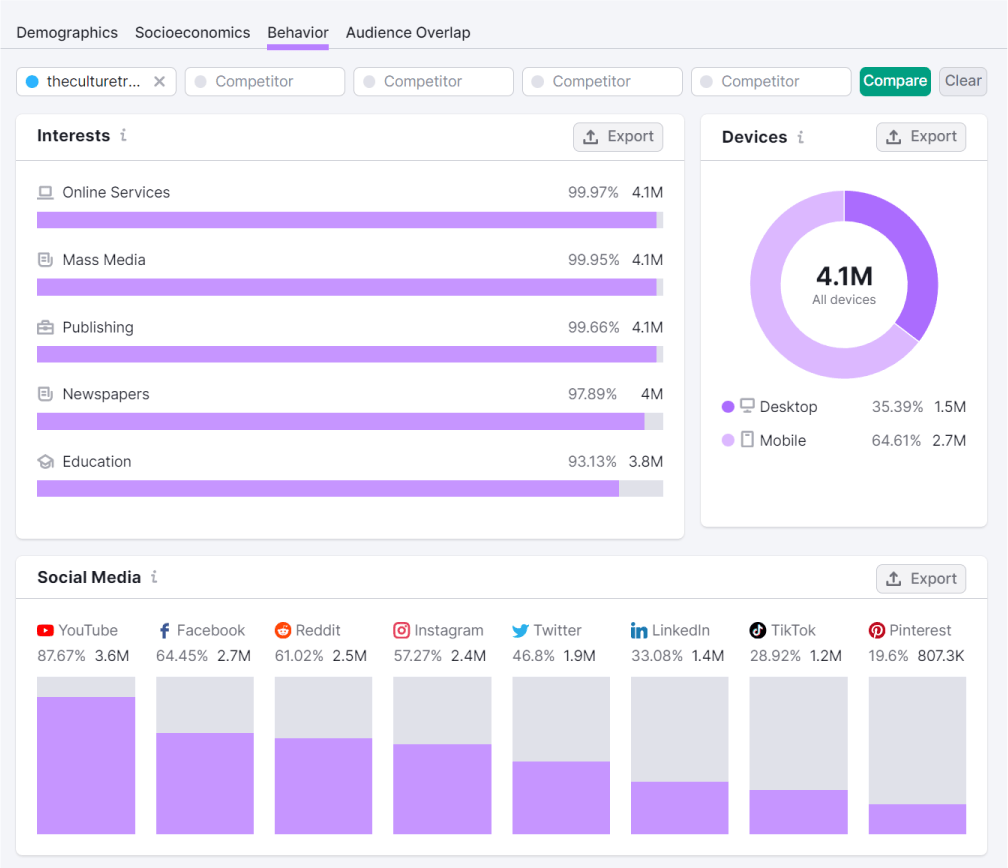
You can also use Semrush's Topic Research tool to gain insights into your audience's interests and pain points through their queries.
Remember Social
Social media allows your B2C brand to directly interact with your customers, build relationships, and create a sense of community.
It holds a paramount position in B2C content marketing because of its immense reach and direct engagement capabilities.
Social media offers personalized and interactive communication, real-time engagement, and invaluable insights into consumer preferences. You can showcase products and create relatable content that resonates with consumers' lifestyles and emotions.
You can also analyze your social media channels with Semrush Social.
You can also analyze your social media channels with Semrush Social. First, go to the "Social Media" section in the left sidebar. Then, click "Social Analytics."
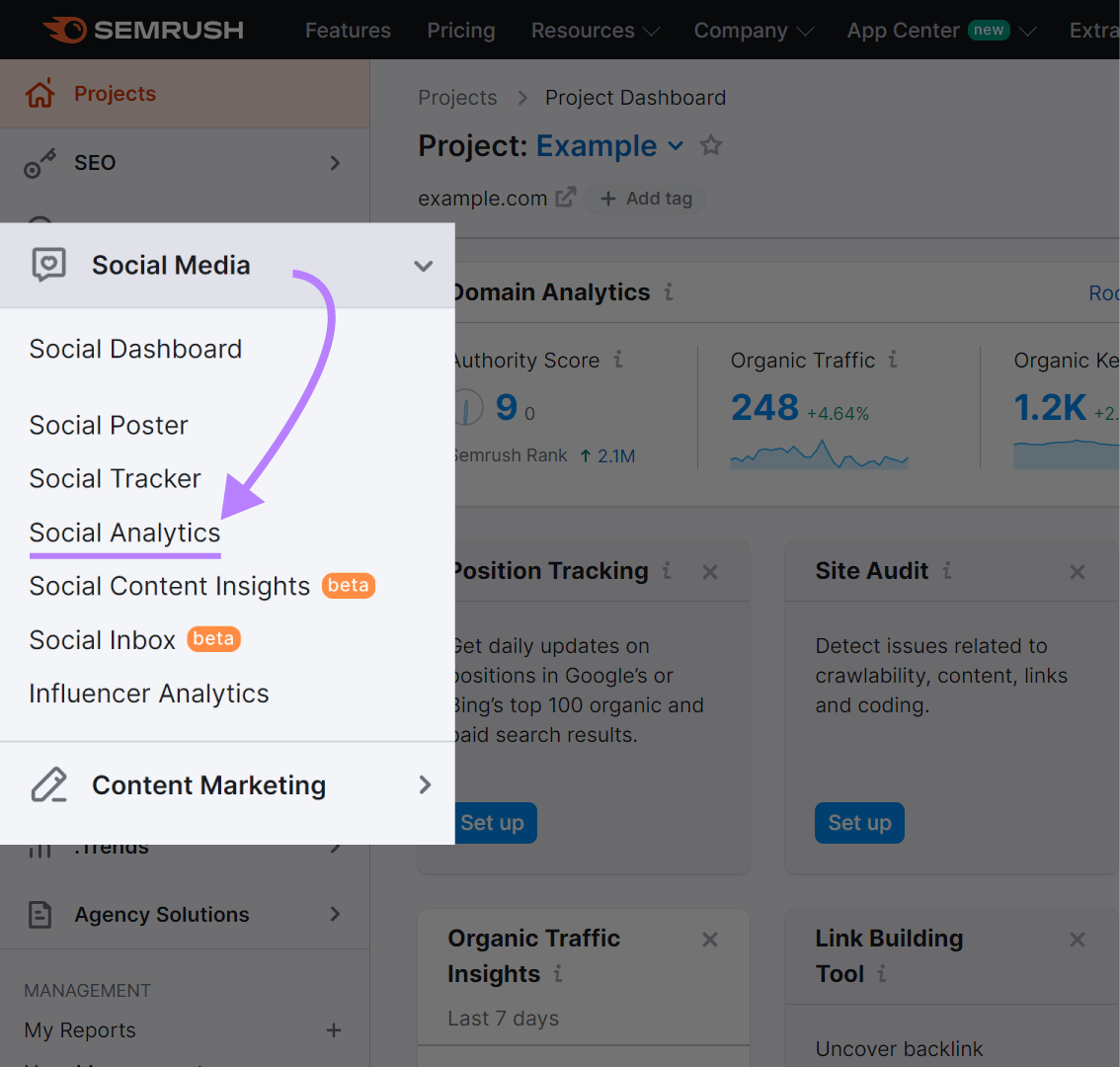
Connect your profiles by clicking the "Add profile" button. Select a social media channel to connect.
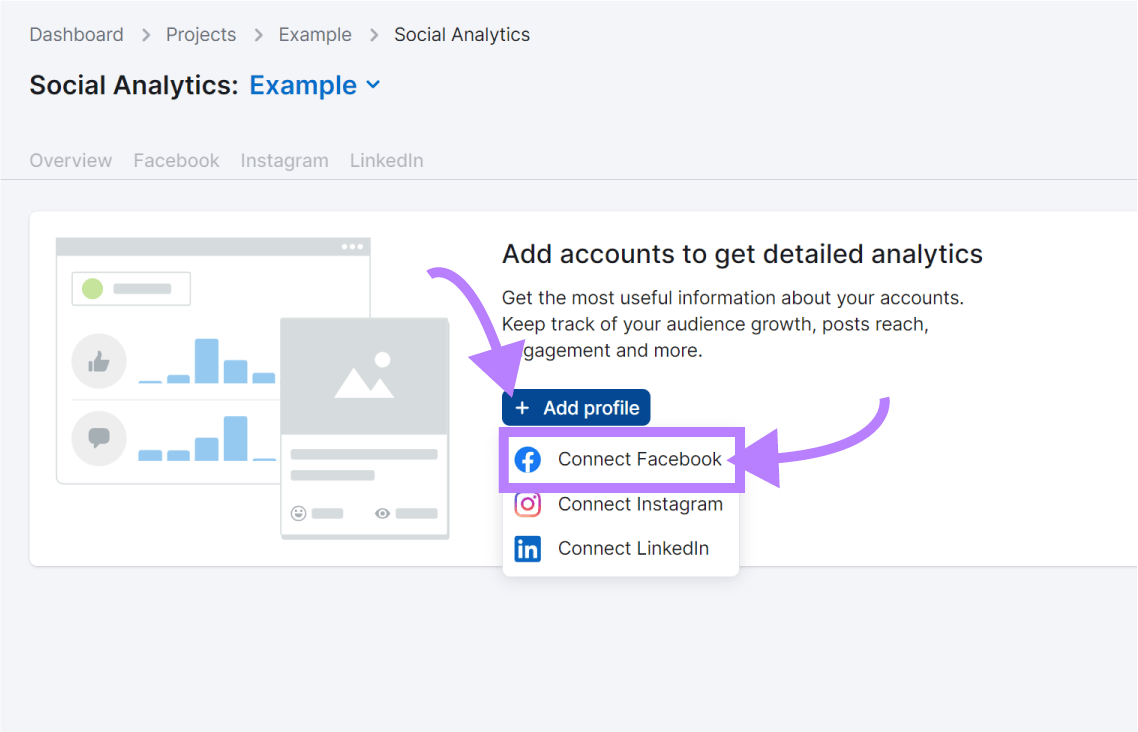
Then, just follow the configuration wizard.
Let's say you want to analyze Facebook. First, connect your Facebook page by following the instructions above.
Then, go to the “Facebook” tab in the upper menu, next to the "Overview" tab.
There, you'll find a detailed breakdown of your audience, page likes, engagement, and posts:
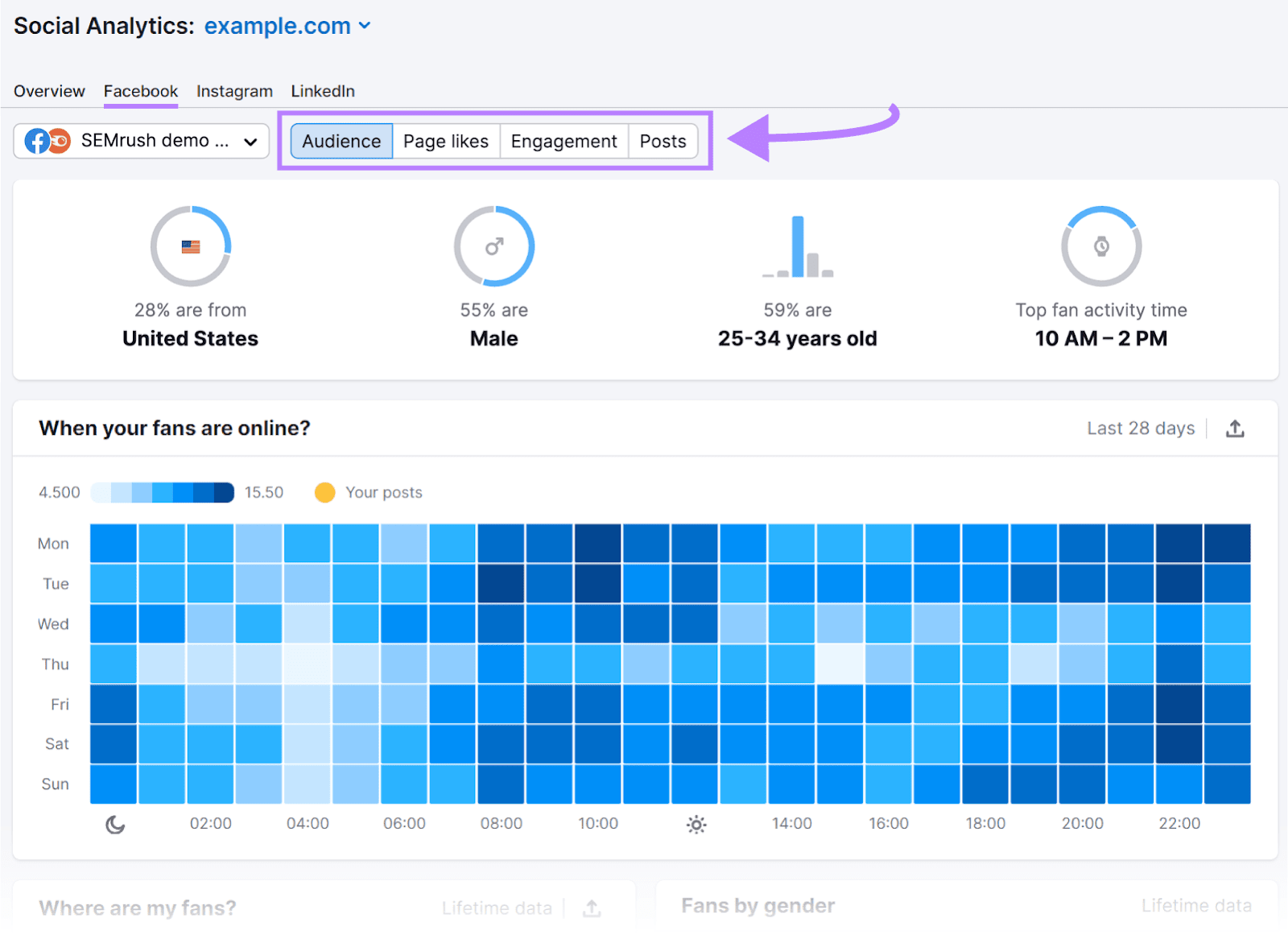
It's as easy as that.
And you can use the same process for LinkedIn and Instagram, too.
The more you know about your audience's behavior on social media, the better you can tailor your social content to their needs and interests.
Consider K-Factor
The K-factor (or viral coefficient) quantifies the growth rate of websites, applications, or customer base as a direct outcome of customer referrals.
In other words:
It measures how many new customers each existing customer brings in. For example, let's say one customer refers three new customers to your business. In this case, your K-factor would be 300% (or 3.0).
This means that for every customer you acquire, they bring in an additional three customers. Leading to exponential growth in your customer base.
It's a key metric for B2C content marketing. Because it provides insights into how consumers are sharing your content. And the rate at which it attracts new potential customers.
In a B2C setting, people tend to make buying decisions based on social proof, recommendations, and user reviews. That's why fostering a high K-factor can strengthen your brand’s reach, engagement, and sales conversion.
So, how can you increase your K-factor?
A referral program can be an effective way to do that.
It's a marketing strategy that encourages existing customers to spread the word about your products or services to their network.
Here's what Revolut’s referral program looks like:
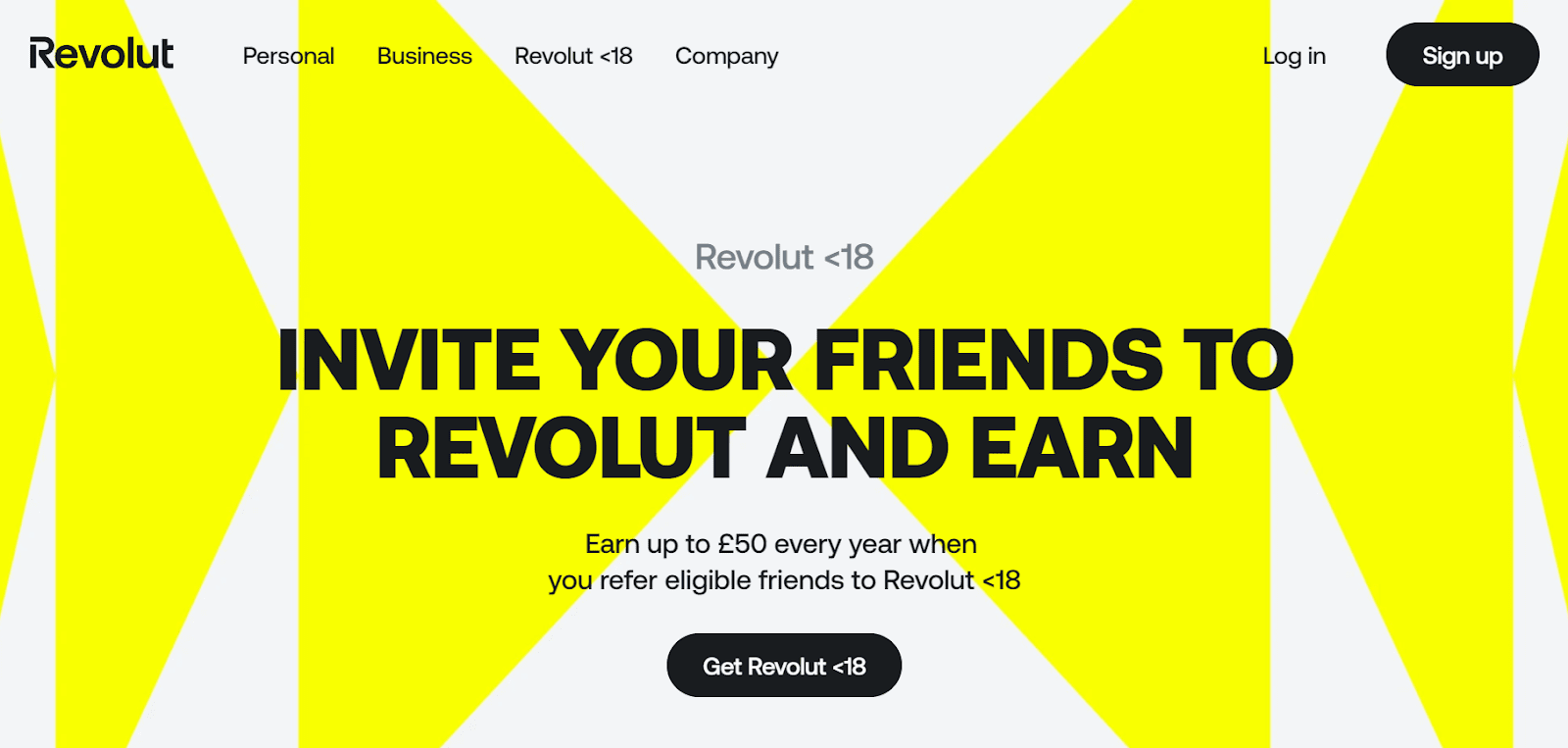
To set up a referral program, decide on the types of rewards you'll offer (e.g., discounts, freebies, exclusive access, etc.)
Then, choose a referral marketing software that suits your business needs (e.g., ReferralCandy, Yotpo, etc.).
Once you've chosen a tool, customize your program by setting up the rules, rewards, and messaging.
You can then integrate your referral program into your website, email marketing, social media, and other marketing channels.
Affiliate marketing can be another great strategy to increase your K-factor because it operates similarly to a referral program.
By having affiliates promote your products or services, you can leverage their existing audience and network to reach a wider audience. This can result in more referrals and conversions, ultimately boosting your K-factor and driving growth for your business.
Get Customers to Contribute
Content that customers create and share about your brand or products is called user-generated content (UGC).
UGC can take various forms, including:
- Social media posts
- Reviews
- Testimonials
- Blog posts
- Videos
- Photos
Here's how GoPro uses this strategy on Instagram:
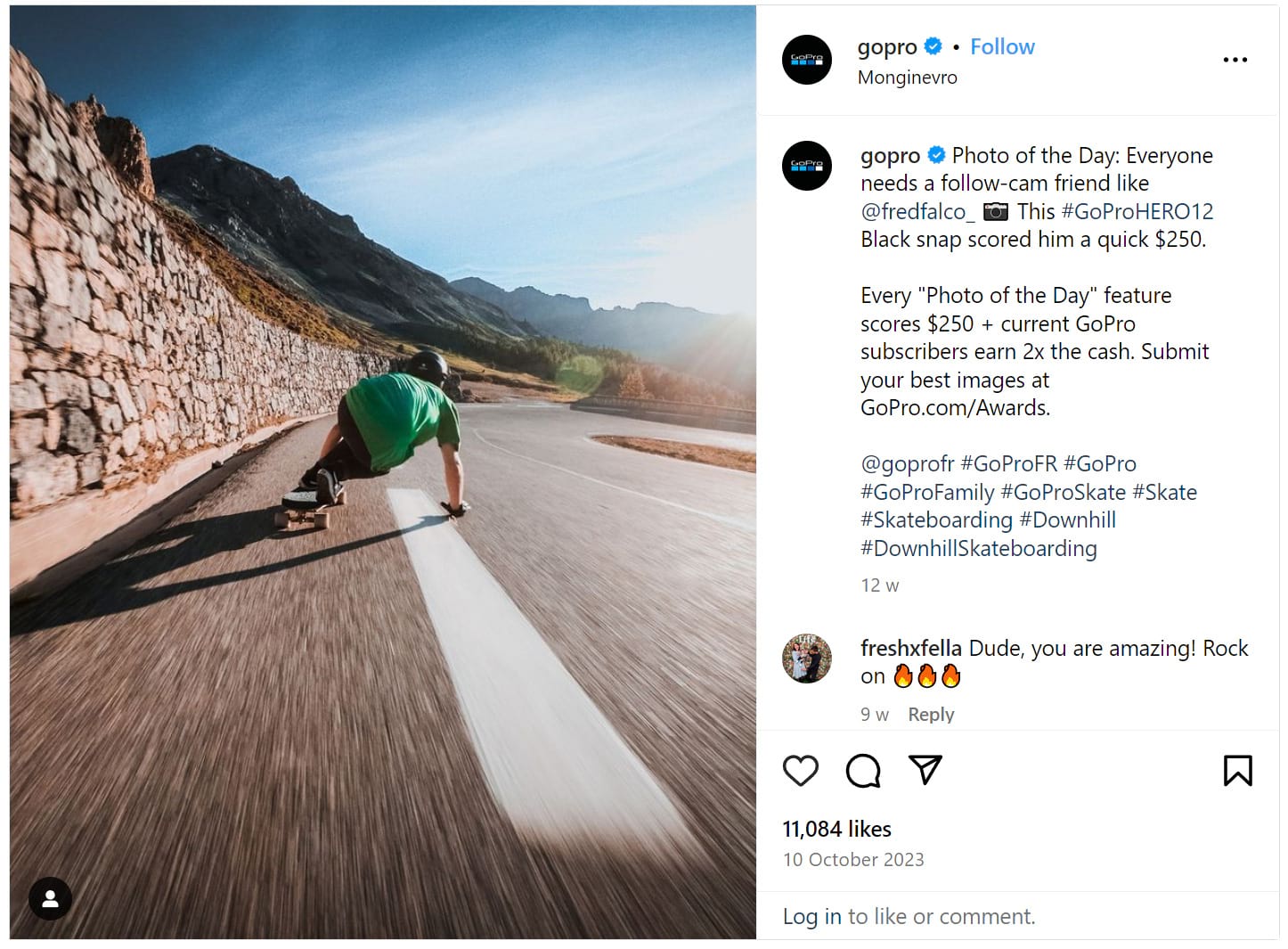
The essence of UGC lies in its authenticity.
It's content created by real users who have interacted with your product or service. Making it highly relatable and trustworthy to other consumers.
But if you want to leverage UGC, how do you find it?
You can use tools like Prowly's Media Monitoring. It can help you detect brand mentions and chosen keywords. And you can reply in real time.
This engages readers and provides timely responses. Creating dynamic and interactive communication for an enhanced user experience.
Protect Your Brand
Trust breeds loyalty. Consumers are more likely to purchase from a brand they trust. More importantly, they're likely to become repeat customers. Making trust the lifeblood of sustained business growth in the B2C landscape.
They can also become advocates for your brand within their personal networks. Sharing recommendations and positive experiences.
But trust in your brand is also harder to repair in B2C marketing.
So, as you broaden your presence across different channels and team up with diverse influencers, it's crucial to safeguard the integrity of your brand.
Here are a few ways you can ensure your brand is protected:
- Research influencers. Before partnering with influencers or appearing on other platforms (e.g., podcasts, guest blog posts, etc.), do thorough research. Make sure their values align with yours. And they have a positive reputation.
- Monitor brand mentions. Keep an eye on all channels and quickly address any negative feedback or complaints. This shows you value customer opinions and are committed to delivering a positive experience.
- Create a crisis management plan. Be ready to address any issues that could harm your brand's image
- Monitor your content. Ensure its accuracy, relevance, and tone remain aligned with your brand's values and message
Stay Aligned Internally for a Cohesive Message
Having internal alignment is key to keeping your message consistent across sales, customer service, and product development teams.
Maintaining brand consistency across your company's departments and platforms helps create a unified brand image that truly connects with your audience.
For example, LEGO's messaging revolves around the power of play and imagination.
This theme is aligned across their product packaging, TV commercials, and digital content:
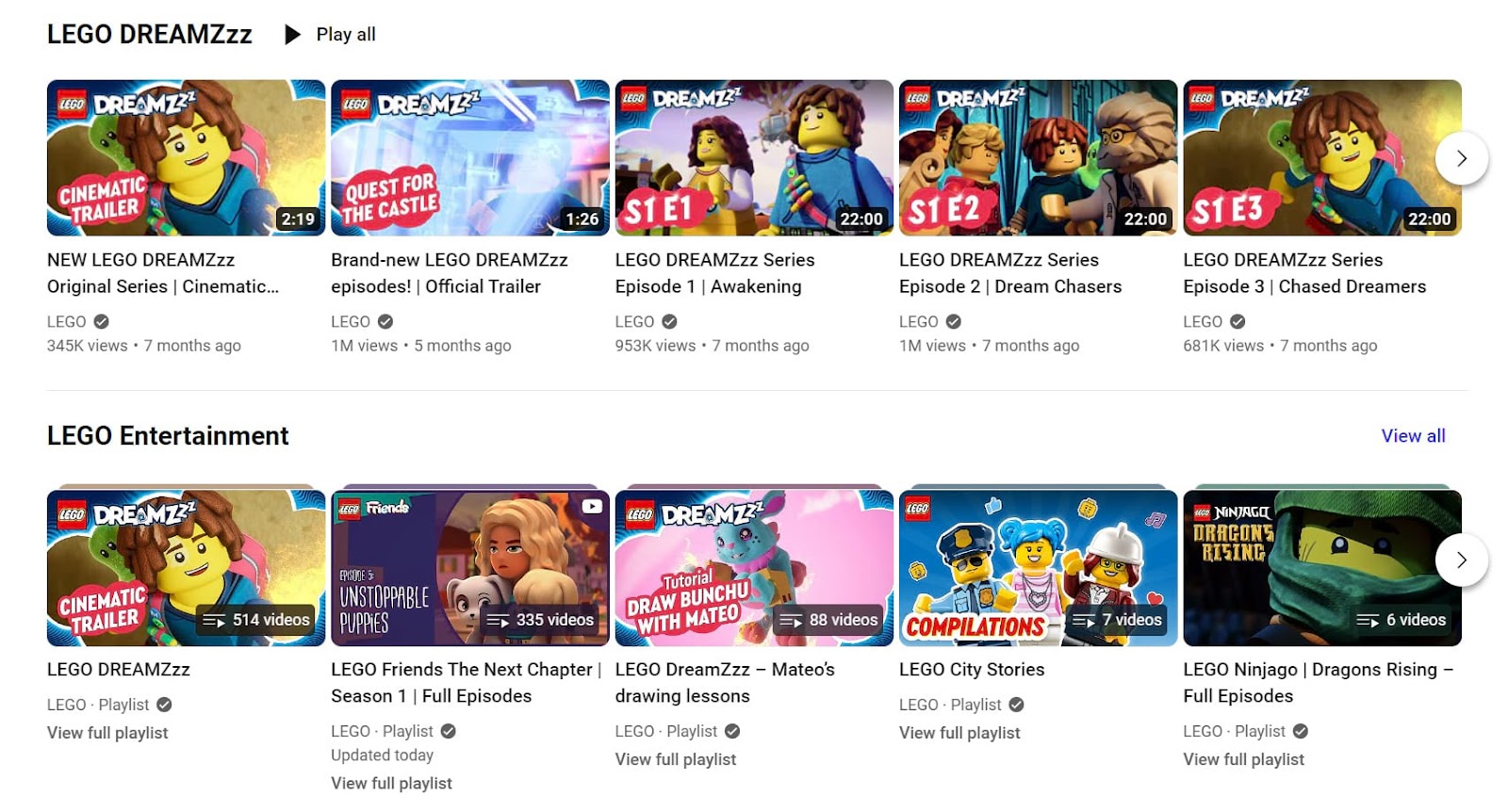
And even in their movie franchise:
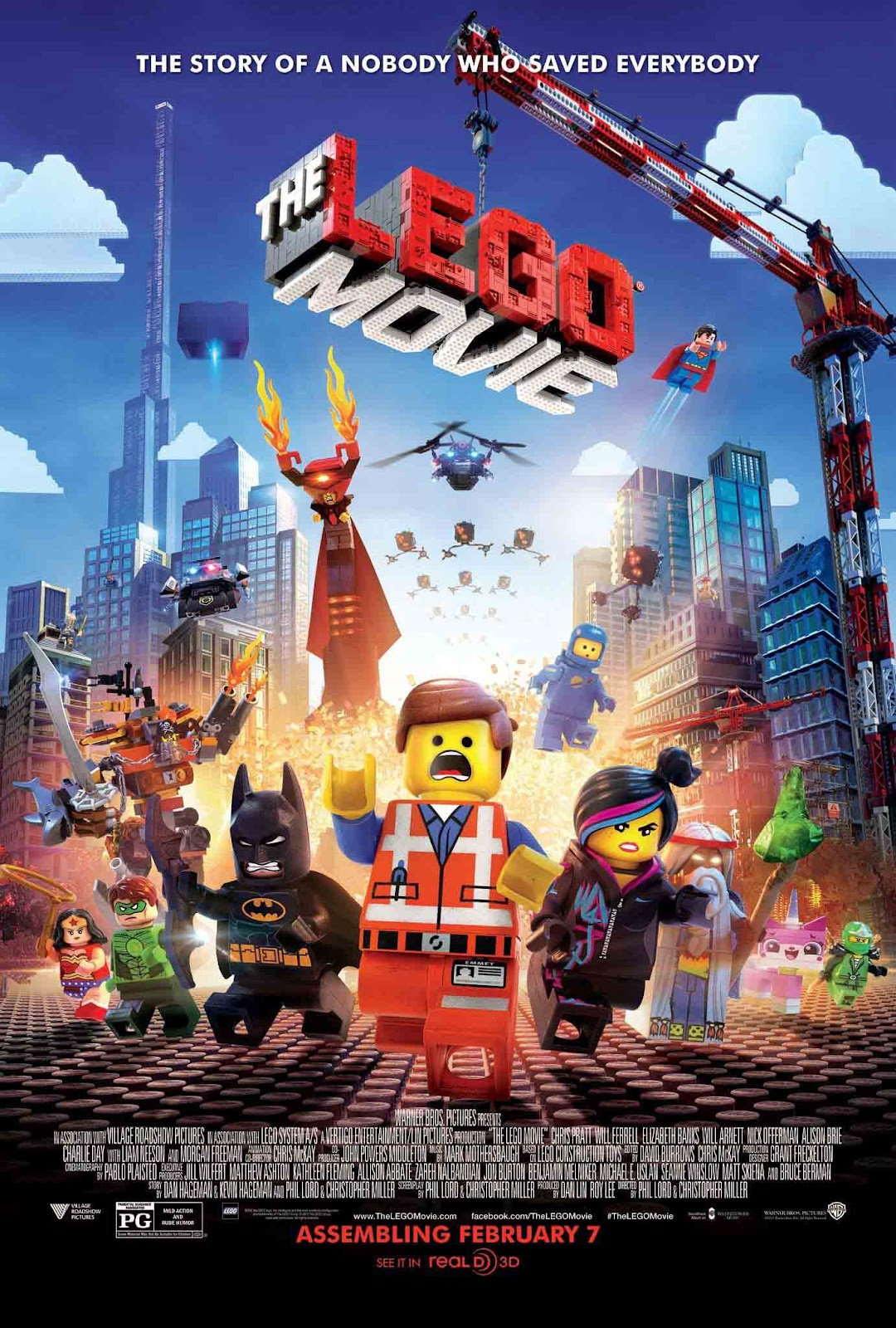
Image Source: IMDB
Achieving this alignment can elevate the customer experience, build trust, and strengthen the overall perception of your brand.
B2C content marketing targets a broad audience known for quick decision-making.
So, seamless collaboration and alignment of marketing strategies with business objectives and consumer needs are crucial.
Here are some tips to help you achieve this:
- Align everyone on your brand's goals, target audience, key messages, and content types for a solid B2C content marketing strategy
- Ensure consistent tone, language, and style for a cohesive brand image across all content mediums
- Use tools like Trello, Slack, and Google Workspace to ensure all stakeholders are aligned and aware of ongoing content initiatives
- Conduct regular meetings or check-ins to keep everyone aligned, update on projects, gather input, and discuss any issues or adjustments
- Gather regular feedback from your audience to ensure your content remains relevant and resonates with them
Supercharge Your B2C Content Marketing Journey
Semrush gives you access to a plethora of tools to help you better understand your audience and outshine your competition.
Its suite of tools can help you with almost everything. From keyword and competitor research to content creation and optimizationto performance tracking.
And you can start using Semrush for free today.
Unlock a new level of growth for your B2C content marketing strategy.
